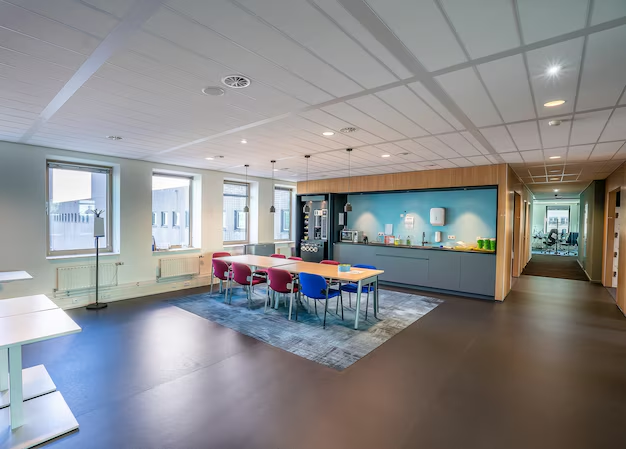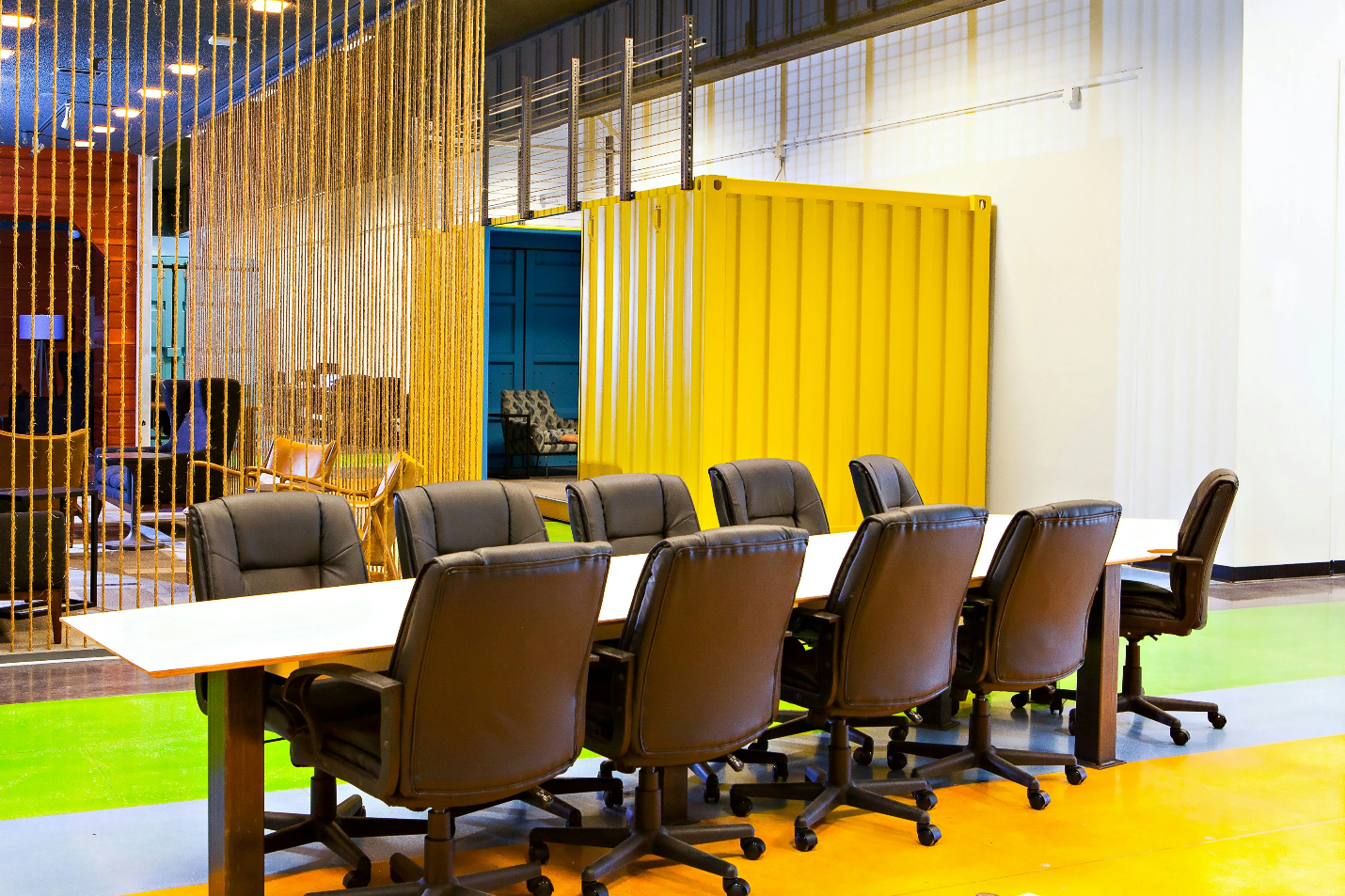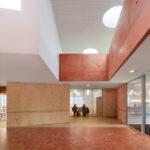A Complete Guide to Commercial Interior Design
Commercial interior design is an important factor in developing effective, visually appealing, and effective commercial environments. According to a recent study, interior design services for commercial spaces are expected to experience a growth rate of 5.8% from 2020 to 2025, indicating an increasing demand for commercial interior design.
Regardless of whether it is a retail store, an office, a restaurant or a healthcare facility, the design of commercial space can influence productivity, customer satisfaction, and the success of your business.
This guide explores the basics of commercial interior design and how interior designers operate and the functions of interior design companies to turn spaces into vibrant, business-oriented environments.
The Importance of Commercial Interior Design
Architecture is not just about the looks; it is about the functionality of the commercial space and how it can help the business achieve its objectives as well as the comfort of the users. Here’s why commercial interior design is crucial:

- Improved Productivity: In office environments, good design can enhance the morale of the workers and increase their efficiency. A study revealed that 90% of employees are of the view that the quality of workplace design impacts productivity.
- Brand Identity: The appearance of a commercial area is usually a representation of the company’s image. For instance, the design elements are used in commercial spaces like retail stores to ensure that the shopping experience reflects the image of the store and hence the behavior of the customers is controlled.
- Customer Experience: In the hospitality and retail industries, the design affects customers’ satisfaction and their likelihood of returning. For instance, a well-designed restaurant will make customers want to come back for more meals since they will feel comfortable.
Key Elements of Commercial Interior Design
- Space Planning
Organization of space is the first step in any business interior design process. It is the process of planning the layout of furniture, equipment and spaces to achieve the best traffic pattern.
A commercial interior designer always takes time to analyze the available space to ensure that the layout created will suit the intended use and space utilization.
- Lighting
Lighting is a very important factor in commercial buildings. It can be used to create a mood, to draw attention to certain areas and even enhance usability. For instance, in an office environment, adequate lighting can help minimize eye fatigue and enhance focus.
Lighting is another important element in commercial interior design where the designers use natural and artificial light sources to achieve the best results.
- Materials and Finishes
The selection of materials and the finishes used in a commercial building are important in the appearance as well as the endurance of the building.
Areas that are likely to receive a lot of traffic such as retail stores or restaurants need materials that are not only aesthetically appealing but also durable and easy to clean.
Interior designers choose materials that reflect the brand while catering to the functionality of commercial spaces.
- Color Scheme
It is worth noting that hue has a profound impact on people’s emotions and actions. In commercial interior design, the color scheme is selected based on the brand image and the feelings that the designers want to elicit from the clients.
For example, warm colors such as red and orange are used in restaurants to create hunger while cool colors are used in health facilities to reduce tension.
- Technology Integration
Contemporary business environments may entail the need to incorporate technology into the design. Smart lighting systems, advanced security measures, and many other features are the elements of commercial interior design that cannot be implemented without technology.
Architects try to make technological features as effective and discreet as possible to improve the effectiveness of space.
The Role of a Commercial Interior Designer
A commercial interior designer is an individual who focuses on the design of interiors that are used for business purposes. They have a good relationship with the clients in order to know what they want and how to turn that into functional and beautiful spaces.
The designer’s role typically involves:
- Consultation: Consult with the clients in order to understand their requirements, expectations and the amount of money they are willing to spend.
- Space Planning: Creating a layout that will allow the efficient use of space and at the same time meet the objectives of the business.
- Design Development: Designing elaborate layouts that incorporate the choice of materials, finish, lighting, and furniture.
- Project Management: Supervising the process of the design, managing the contractors suppliers, and other parties involved in the process to ensure that the project is done on time and within the estimated cost.
How to Choose the Right Commercial Interior Designer
It is therefore important that you choose the right commercial interior designer for your project.
Here are some tips to help you make the right choice:
- Experience: Ensure that the designer you choose has worked on similar projects as the ones you want to be done. An experienced designer will have a portfolio that shows that he or she can undertake the task in the project.
- Reputation: Read the reviews and ask for references from other customers. A reputable designer will have testimonials from previous clients and good records of previous projects.
- Compatibility: One should select a designer who can appreciate your ideas and be willing to work with you. It is important that there is constant communication to make sure that the project is what you want.
Why You Should Work with Commercial Interior Design Companies
There are many commercial interior design firms and most of them provide full-service design solutions, including the coordination of the project from the planning stage to the implementation stage.
Hiring an interior design company offers several benefits for businesses looking to enhance their commercial spaces:
- Time and Cost Efficiency: It is beneficial to work with a professional design company because they will help you avoid many problems and delays in the design and construction of a building. They have developed contacts with contractors and suppliers, which may result in lower costs of the materials and the labor force.
- Increased Property Value: The design of the commercial space is also important since it adds value to the property hence making it a worthy investment. This is especially so for businesspeople who intend to dispose of their premises through sale or leasing.
- Enhanced Brand Image: Commercial spaces should be well designed to complement your brand image and provide the best experience for the customers. This can result in greater customer retention and recommendations to other people.
Conclusion
Commercial interior design is an essential aspect of designing spaces that are not only aesthetically appealing but also efficient and relevant to the business.
With the planning of the space, material selection, and incorporation of technology, commercial Interior design companies can turn normal spaces into active spaces that can foster productivity, improve customers’ experience, and promote your brand.





